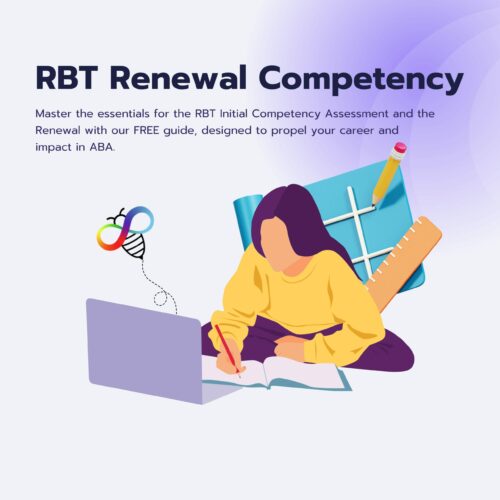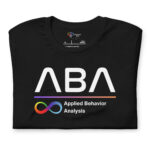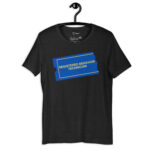Welcome to Your Journey Through the RBT Competency Assessment with our FREE Comprehensive Guide. This guide ensures you are thoroughly prepared, providing detailed explanations, practical examples, and essential strategies covering all necessary tasks. Whether preparing for your initial certification or renewing your credentials, engaging with this guide equips you with the crucial knowledge and skills to excel in your role as an RBT.
To embark on your career or continue your development in Applied Behavior Analysis, please visit the Behavior Analyst Certification Board (BACB) website to download the official RBT® Initial Competency Assessment Packet (resource 4) or the RBT® Renewal Competency Assessment Form (resource 2) as required. The initial certification process offers flexibility with role-play and interview-based assessments, while the renewal emphasizes practical application, requiring tasks to be completed with clients.
We understand that in your day-to-day role as an RBT, depending on your clients’ unique needs, you may not regularly utilize every skill listed. Don’t stress it! Our guide is designed to help you brush up on any areas you might not have engaged with recently.
We wish you success as you either advance or continue in your career in Applied Behavior Analysis. Engaging with this guide ensures you remain at the forefront of best practices and compassionate client care, reinforcing your capability to not only meet but exceed the competency criteria.

Tasks 1-3 Measurement
1. Continuous Measurement
This involves implementing procedures to measure behavior continuously, such as tracking frequency, duration, latency, and inter-response time (IRT).
Frequency: This measures how often a behavior occurs within a given time frame.
- Example: Tracking the number of times a child engages in hand-flapping behavior during a two-hour observation period at a community playground.
Duration: This measures how long a behavior lasts from start to finish.
- Example: Measuring the total time a student spends reading independently in a 45-minute library session.
Latency: This measures the time elapsed from a specific event or cue until the start of a behavior.
- Example: Recording the time it takes for a client to greet a peer after the peer says “hello” first.
Inter-Response Time (IRT): This measures the amount of time that occurs between two consecutive instances of a target behavior.
- Example: Measuring the time gap between each instance of a child initiating conversation with different peers during recess. This could involve observing how long it takes for the child to approach a second peer and start a conversation after finishing an interaction with the first peer.
2. Discontinuous Measurement
This refers to the implementation of discontinuous measurement procedures like partial and whole interval recording, and momentary time sampling.
Partial Interval Recording: This method involves observing whether a behavior occurs at any time during an interval.
- Example: An RBT monitors a student’s behavior of raising their hand before speaking in class. They use partial interval recording, observing during specific 2-minute intervals throughout the lesson to note if the student raised their hand at least once during any of these intervals.
Whole Interval Recording: This method requires the behavior to occur throughout the entire interval to be recorded.
- Example: Monitoring a child’s ability to stay seated during story time. An RBT uses whole interval recording with 5-minute intervals, marking ‘yes’ only if the child remains seated without standing up throughout the entire 5-minute interval.
Momentary Time Sampling: This involves recording the presence or absence of a behavior at specific moments.
- Example: Assessing a group’s participation in a cooperative learning activity. Using momentary time sampling, the RBT observes at the start of every 20-minute period to record if all members are actively contributing to the group work at those exact moments.
3. Data and Graphs
This task involves entering data into records and updating graphs based on this data. (Basically, making sure that you know how to enter data into the platform that your company is using i.e. CentralReach)
- Example: An RBT is tasked with monitoring a student’s progress in reducing instances of interrupting during group activities. After each group session, the RBT documents the number of interruptions made by the student. This quantitative data is then meticulously entered into a digital platform like CentralReach, where it’s converted into a bar graph. The graph provides a week-by-week comparison, illustrating a clear downward trend in the frequency of interruptions. This visual tool not only demonstrates the student’s behavioral improvements but also aids in adjusting intervention strategies and facilitates transparent communication with the team and family members regarding the student’s progress.
Tasks 4-5 Assessment
4. Preference Assessments
This involves assessing the client’s preferences, including items, activities, or anything that may motivate them. During a preference assessment, items must always be in the same category (i.e., edibles with edibles and toys with toys, etc…).
Single Item Presentation: Show one item at a time and see if the person likes it.
- Example: An RBT presents various musical instruments one at a time to a student to identify which instrument garners the most interest, observed through actions like clapping, pointing, or verbal requests to play it.
Paired Choice: Present two items at a time and see which one is chosen.
- Example: During a leisure skills session, an RBT offers a child the choice between two sensory activities: playing with slime or a light-up spinner. The child’s choice helps determine which sensory item is more reinforcing.
Multiple Stimuli with Replacement (MSW): Present many items at once, and after a choice is made, replace it with a new item.
- Example: An RBT sets up a selection of art supplies (crayons, markers, watercolor paints, and colored pencils) on a table. After a client selects one item (e.g., markers), the RBT replaces the chosen item with a new option (e.g., stickers) for the next round of selection, aiming to rank the child’s preference for art activities.
Multiple Stimuli without Replacement (MSWO): Similar to MSW, but you don’t replace the chosen item.
- Example: In a session aimed at identifying preferred outdoor activities, an RBT presents a variety of options (jump rope, basketball, sidewalk chalk, and a frisbee). After the child selects the jump rope, it is not included in the next round of choices, allowing the RBT to determine the hierarchy of preferred outdoor activities based on the child’s remaining selections.
5. ABC Data Collection
ABC stands for Antecedent, Behavior, and Consequence. This task involves collecting data on what happens before a behavior (Antecedent), the behavior itself, and what happens after the behavior (Consequence).
- Example:
Antecedent (A): The parent sets a condition that the child can use the iPad after completing their homework. This is the event that occurs before the behavior, setting the stage for the child’s actions.
Behavior (B): The child completes their homework without complaining or delaying. This is the observable action taken by the child in response to the antecedent.
Consequence (C): After the homework is completed as required, the child is given the iPad to play games. This is the outcome or response that follows the behavior, serving as reinforcement for the child’s compliance and prompt completion of homework.
The ABC model in this example helps illustrate how a specific antecedent (the promise of iPad time) leads to a desirable behavior (completing homework without complaints), which is then reinforced by a positive consequence (getting to use the iPad), increasing the likelihood of the behavior occurring again under similar circumstances.
Tasks 6-15 Skill Acquisition & Behavior Reduction
Three of tasks 6-15 must be demonstrated with a client.
6. Discrete-Trial Teaching (DTT)
This involves teaching a skill in a structured way, using a series of “trials” to teach each step of a desired behavior or response.
- Example:
An RBT conducts a 15-minute DTT session at a table with an echoic client to work on a blend of listener responding skills, echoics, and motor imitation. The session is structured to alternate among these three target skills:
Listener Responding Skills: The RBT holds up pictures of common objects and asks the client to point to specific items (e.g., “Show me the apple”). This targets the client’s ability to understand and respond to verbal instructions.
Echoics: The RBT says a word or short phrase (e.g., “ball” or “clap hands”) and encourages the client to repeat it back. This exercise aims to improve the client’s vocal imitation skills.
Motor Imitation: The RBT demonstrates a simple action, such as clapping hands or touching their nose, and asks the client to imitate the action. This focuses on the client’s ability to observe and replicate physical movements.
Reinforcement is given on a variable ratio schedule of 5, meaning after an average of every fifth correct response across these tasks, the client receives a reinforcer. The reinforcer could be verbal praise, a small token, or a brief interaction with a preferred item. This variable reinforcement schedule helps maintain the client’s motivation and engagement by making the reinforcement unpredictable yet attainable, encouraging consistent effort across all trials.
7. Naturalistic Teaching
This strategy focuses on teaching skills in a more natural, everyday environment rather than a structured setting.
- Example: An RBT utilizes snack time as an opportunity for naturalistic teaching with a child. The child is presented with a variety of snacks, some within clear view but out of reach, and others hidden in containers. The RBT waits for the child to indicate a preference either through pointing, gesturing, or using a word/phrase (for more verbal children). When the child shows interest in a specific snack, the RBT prompts them to use a polite request, such as “Can I have the crackers, please?” (a client with lower level of advancement in speech might only be prompted to say “Cracker”) This scenario fosters the child’s communication skills by encouraging them to initiate requests and use polite language in a natural setting, mirroring real-life interactions.
8. Chaining
This method involves breaking down a complex skill into smaller, manageable steps and teaching each step sequentially.
In this scenario of making a peanut butter sandwich, let’s explore how the chaining method can be applied through forward chaining, backward chaining, and total task chaining:
Forward Chaining for Making a Peanut Butter Sandwich:
- First Step: The individual learns to gather all necessary ingredients (bread, peanut butter, knife) and materials. This step is taught and reinforced until mastered.
- Next Steps: Sequentially, the individual is taught to open the peanut butter jar, spread peanut butter on one slice of bread using the knife, place the second slice of bread on top to complete the sandwich, and finally, clean up the area.
- Progression: Each step is mastered before moving on to the next, with reinforcement provided at the completion of each step. All subsequent steps are prompted as needed, using the most-to-least prompt hierarchy.
Backward Chaining for Making a Peanut Butter Sandwich:
- Final Step: The individual starts by learning to clean up the area after sandwich preparation, including putting away the peanut butter jar and washing the knife.
- Previous Steps: Once the cleanup is mastered, the individual then learns to place the second slice of bread on top of the first to complete the sandwich. Next, they would learn to spread peanut butter on one slice of bread, then how to open the peanut butter jar, and finally, gathering all necessary items is the last step taught.
- Regression: Teaching moves backward through the sequence, with mastery of each later step before introducing the earlier ones. Reinforcement is provided as each new (backward in sequence) step is mastered.
Total Task Chaining for Making a Peanut Butter Sandwich:
- Entire Task: The individual is guided through the entire process of making a peanut butter sandwich in each session. This involves gathering ingredients, opening the jar, spreading peanut butter, assembling the sandwich, and cleaning up.
- Guidance: Depending on the individual’s ability, various forms of assistance are provided, such as physical guidance, visual aids, or verbal prompts for each step.
- Reinforcement: Reinforcement is given after the completion of the entire task, encouraging the individual to engage in and complete the full sequence of making a sandwich from start to finish.
This approach to teaching complex skills in small, manageable steps allows individuals to learn and master each part of the task, ensuring a comprehensive understanding and ability to perform the entire activity independently.
9. Shaping
This technique involves gradually modifying an existing behavior into a desired behavior by reinforcing successive approximations of the target behavior.
- Example: For shaping a behavior towards requesting a cookie, here’s how the process might unfold using successive approximations:
Initial Behavior: Reinforce any interest in the cookie, such as reaching towards or looking at the cookie jar. This could be acknowledged with a smile, nod, or verbal acknowledgment like “You see the cookies!”
Simple Vocalization: Next, reinforce any sounds or babbles the child makes when they show interest in the cookies. A simple “Mm?” or any effort to vocalize can be met with encouragement, “Yes, cookies!”
Specific Sounds: Then, start reinforcing closer approximations to the target word, such as the child making the “c” or “coo” sound when they express a desire for a cookie. This could be encouraged with a “That’s right, coo for cookie!”
Partial Word: Reinforce the child for using part of the word, like “cook” or “kie.” Each attempt is met with positive reinforcement, such as saying “Almost there! Cook means cookie!”
Whole Word: Finally, reinforce the use of the full word “cookie” when the child wants one. When the child clearly says “cookie,” they receive one along with enthusiastic praise, “Yes! Cookie! Great asking!”
This shaping process gradually guides the child from a simple interest in cookies to the clear verbal request of the word “cookie,” reinforcing each step towards the desired behavior. Depending on the child’s developmental level and learning pace, the duration of this process can vary significantly.
10. Discrimination Training
This focuses on teaching the client to differentiate between different stimuli and respond appropriately.
- Example: Discrimination Training with Animals:
Introduction of Stimuli: Start the training with a small, manageable set of animals to avoid overwhelming the learner. For example, choose two animals such as a cat and a dog.
Clear Presentation: Use 2D cards depicting the cat and the dog. Present these cards one by one to the learner, clearly labeling each animal as it is shown. Say “This is a cat” when showing the cat card, and “This is a dog” when presenting the dog card.
Differential Reinforcement: Once the learner is familiar with the labels for each animal, begin asking them to identify an animal by pointing to it when named. For instance, say “Show me the cat” and wait for the learner to respond. If the learner correctly points to the cat card, provide immediate positive reinforcement, such as verbal praise or a small reward. If the learner selects the wrong card, use this as a teaching moment to gently correct and represent the correct card, reinforcing the learning.
Increasing Complexity: After the learner shows proficiency in distinguishing between the initial two animals, introduce more animal cards to the selection, such as a bird or a fish, continuing with clear presentations and differential reinforcement for correct identifications.
Generalization: Ensure the learner can identify the animals across different cards and in various contexts, aiming to generalize the discrimination skill beyond the initial teaching set. This could involve using cards with different images of cats and dogs or including these animals in storybooks and real-life identification when possible.
This structured approach, emphasizing clear presentation, differential reinforcement, gradually increasing complexity, and aiming for generalization, supports the learner in developing the ability to discriminate between different animals effectively.
11. Stimulus Control Transfer
Occurs when the control of a behavior shifts from one stimulus to another, ensuring the response occurs under new stimulus conditions. This process is essential in teaching new skills and promoting independent responses in natural environments.
- Example: Stimulus Control Transfer: Echoic to Tact Transfer
Initially, a child learns to say a word through echoic prompts, meaning they repeat a word after hearing it from an adult. For instance, when an RBT holds up an apple and says, “Apple,” the child repeats, “Apple.”
To transfer control from the verbal prompt to the actual object (the apple), the RBT gradually fades the echoic prompt by introducing a slight delay before saying the word, allowing the child the opportunity to respond independently. If the child does not tact (label) the apple, the RBT provides a minimal prompt, such as the first sound of the word (“Ap…”), or a nonverbal cue like pointing to the apple.
Over time, the verbal prompt is removed entirely, and reinforcement is provided when the child spontaneously labels the apple upon seeing it. This ensures that the child’s response is no longer dependent on the adult’s verbal model and that the apple itself becomes the stimulus that evokes the correct response.
By systematically fading prompts and reinforcing independent responses, the child successfully learns to tact objects in their natural environment, strengthening their ability to communicate effectively.
12. Prompting and Prompt Fading
Using prompts to encourage the correct response, then gradually reducing the prompt level to foster independence.
- Example: Prompting and Prompt Fading: Washing Hands
Initially, the RBT guides a child through the handwashing process with physical prompts, helping them turn on the tap, apply soap, scrub hands, rinse, and use a towel. As the child becomes more familiar with each step, the RBT shifts to gestural prompts, such as pointing to the soap or tap, then to verbal prompts like “What’s next?” Finally, the child is encouraged to wash their hands with only a verbal reminder to start the process, such as “It’s time to wash hands.” Over time, the child initiates handwashing independently in response to relevant cues, like before meals or after using the restroom, demonstrating mastery of the skill without needing prompts.
13. Token Systems
A reinforcement system where tokens are earned for specific behaviors and exchanged for desired items or activities.
- Example: An RBT sets up a token system for a student who struggles with completing homework on time. The student earns a token for each homework assignment completed without reminders. After accumulating ten tokens, the student can exchange them for a reward, such as choosing a movie for movie night or a small toy from a reward box. This system motivates the student to complete homework independently, reinforcing the positive behavior of timely homework completion with tangible rewards.
14. Crisis/Emergency Procedures
Implementing predetermined procedures to manage and mitigate crisis or emergency situations.
- Example: In the event a child attempts to elope from the classroom or therapy setting, the RBT immediately implements the facility’s elopement protocol. This includes calmly but quickly ensuring the safety of the child by guiding them away from exits, using verbal cues and physical guidance as trained. The RBT then engages the child in a previously identified calming or preferred activity to reduce stress and prevent further attempts. After the situation is under control, the incident is thoroughly documented, and the child’s care team is notified to review and adjust the safety plan as necessary, ensuring all staff are prepared for future incidents.
15. Antecedent Interventions, Differential Reinforcement, and Extinction
These involve modifying the environment to prevent unwanted behaviors, reinforcing alternative behaviors, and reducing reinforcement for unwanted behaviors, respectively.
Antecedent Interventions: These are strategies aimed at modifying the environment or circumstances before a behavior occurs to prevent the behavior from happening.
- Example: To address issues with completing homework, an RBT could create a structured homework routine, including a clear start time and a comfortable, distraction-free workspace. This proactive approach aims to minimize procrastination and increase task engagement by making the homework process more manageable and predictable for the student.
Differential Reinforcement: This involves reinforcing a specific desirable behavior while withholding reinforcement for other behaviors.
- Example: For a student who speaks out of turn in class, an RBT employs differential reinforcement by acknowledging and rewarding the student with tokens for raising their hand and waiting to be called on before speaking. Concurrently, the RBT does not provide attention or tokens for speaking out of turn, encouraging the student to adopt the desired behavior of raising their hand to gain attention.
Extinction: This strategy involves the discontinuation of reinforcement for a previously reinforced behavior, aiming to decrease or eliminate the occurrence of that behavior.
- Example: If a student repeatedly leaves their seat to wander around the classroom, gaining peer attention each time, an RBT might use extinction by arranging for peers to not engage or interact with the student during these wandering episodes. Simultaneously, the teacher and RBT ensure that staying seated results in positive reinforcement, such as verbal praise or additional privileges. Over time, the wandering behavior decreases as it no longer results in peer attention, while staying seated is consistently reinforced.
Tasks 16-20 Professionalism and Requirements
16. Session Notes
Involves accurately recording details of sessions, focusing on objective observations and interventions applied.
- Example: During the 90-minute session, the client spent 30 minutes engaging with peers in a group play activity, initiating interaction three times and responding to peer initiations five times. Resistance to transitioning from individual to group activities was observed as verbal statements of ‘no’ and staying seated for two minutes beyond the transition cue. The implementation of a two-minute visual countdown timer and verbal reminders 5 minutes before transitions led to the client joining the group activity with no further verbal protest. Verbal praise was provided immediately following positive social interactions and cooperative play. Additionally, the client selected a book independently at the end of the session, without prompts from the therapist. Progress on social interactions, transition strategies, and independent decision-making was documented (most of your sessions will be longer than 60 minutes; this is just a quick example).
17. Client Dignity
Maintaining client dignity is a fundamental principle in the practice of behavior analysis, guided by the Behavior Analyst Certification Board (BACB). Here are key ways to maintain client dignity, along with quick examples for each:
Respect for Autonomy: Treat clients as autonomous agents capable of making their own decisions.
- Example: Allowing a client to choose between different activities during a session.
Confidentiality: Protect client information from unauthorized access or disclosure.
- Example: Discussing a client’s progress only within confidential settings and with individuals who have a legitimate need to know.
Informed Consent: Ensure clients (or their guardians) understand the nature of the treatment, including potential risks and benefits, and consent to it voluntarily.
- Example: Providing clear, understandable explanations of intervention plans and obtaining written consent before starting treatment.
Personalized Care: Tailor interventions to fit the individual needs, preferences, and cultural background of the client.
- Example: Incorporating a client’s favorite music into a learning activity to increase engagement.
Empowerment: Encourage and support clients to be active participants in their treatment and decision-making processes.
- Example: Inviting a client to set their own goals for a behavior intervention plan.
Non-Discrimination: Treat all clients with equal respect and consideration, regardless of background or characteristics.
- Example: Providing the same quality of care and attention to all clients, irrespective of their cultural or socioeconomic background.
Privacy: Respect clients’ privacy in all aspects of care.
- Example: Ensuring that discussions about sensitive topics are held in private spaces where they cannot be overheard.
Professional Boundaries: Maintain appropriate and professional relationships with clients.
- Example: Keeping communication focused on treatment goals and avoiding personal involvement.
Cultural Competence: Demonstrate awareness and sensitivity to the cultural values and norms of clients.
- Example: Asking about and incorporating cultural traditions and values into the behavior support plan.
Feedback and Collaboration: Actively involve clients and their caregivers in discussions about the treatment, ensuring their insights and preferences inform the ongoing approach.
- Example: An RBT asks for feedback from both the client and their parents at the end of each session about what activities they found most engaging and uses this information to plan future sessions that better align with the client’s interests and family’s expectations.
By adhering to these principles, behavior analysts ensure that their practices not only comply with professional ethical standards but also respect and uphold the dignity of their clients at all times.
18. Professional Boundaries
Separation of Personal and Professional Relationships:
- Example: An RBT declines a friend request on social media from a client’s family member to maintain a professional relationship and directs the family to the clinic’s official page for resources and communication.
Avoiding Dual Relationships:
- Example: An RBT who realizes they are assigned to a distant relative for therapy discusses the situation with their supervisor to ensure reassignment and prevent potential conflicts of interest.
Gifts and Personal Benefits:
- Example: When a client’s parent offers an expensive gift as a thank-you, the RBT politely declines, explaining the policy on gifts and suggesting the family express gratitude in non-material ways, such as a thank-you note that can be shared with the therapy team.
Social Media and Online Conduct:
- Example: An RBT refrains from posting any information related to clients, including indirect references, on any social media platforms, adhering to confidentiality and professional standards.
Physical Boundaries:
- Example: An RBT ensures that any physical contact, such as guiding hand-over-hand during a task, is clinically justified, explained to the client and caregivers, and documented as part of the therapeutic intervention.
Financial Boundaries:
- Example: An RBT does not engage in any financial transactions with clients or their families, such as borrowing money or selling items, to avoid conflicts of interest.
Confidentiality in All Settings:
- Example: An RBT avoids discussing any client information in public spaces, such as elevators or restaurants, where conversations could be overheard.
Professionalism in Communication:
- Example: An RBT communicates with clients and families using clear, respectful language and avoids using slang or overly casual language that could blur professional boundaries.
By adhering to these guidelines, RBTs uphold the integrity of their professional role, safeguard client welfare, and foster a therapeutic environment that prioritizes client progress and well-being.
19. Supervision Requirements
The BACB’s supervision requirements for Registered Behavior Technicians (RBTs) are designed to ensure that RBTs receive consistent, quality oversight and guidance in their practice. Here’s a breakdown of these requirements and how they might be implemented:
Direct Observation with Client: A BCBA watches an RBT during a client session to assess and guide their application of ABA techniques. This allows for immediate feedback on the RBT’s interaction and implementation strategies.
Meeting without Client: The RBT and their supervisor have a dedicated time each month to discuss the RBT’s work, address any concerns, and plan for professional development. This session focuses on reviewing the RBT’s performance, ethical considerations, and any questions the RBT might have.
Minimum Supervision Hours: Supervision must account for at least 5% of the RBT’s total service hours monthly. For example, if an RBT works 100 hours a month, they need at least 5 hours of supervision. This ensures consistent oversight and support.
Documentation and Feedback: Every supervision session is recorded, detailing what was observed or discussed, the feedback given, and next steps. This helps keep track of the RBT’s progress and areas for improvement.
20. Clinical Direction
Clinical direction is essential in guiding RBTs through complex or unexpected situations during their practice. It ensures that RBTs have the support and expertise needed to make informed decisions in the best interest of their clients. Here’s how it can be applied:
Identifying the Need for Consultation:
- Example: An RBT notices a significant increase in a client’s refusal to participate in previously enjoyed activities. Recognizing this change might indicate an underlying issue not covered by the current plan, the RBT understands it’s time to seek further guidance.
Consulting on Challenging Behaviors:
- Example: A client shows new or escalating self-injurious behavior. The RBT, facing a situation beyond the scope of the current intervention plan, promptly consults with their supervisor to discuss observations and collaboratively develop a modified approach or implement additional assessments to address the behavior safely.
Navigating Ethical Dilemmas:
- Example: An RBT is asked by a family member to provide details about another client’s progress. Knowing the importance of confidentiality, the RBT declines to share information and consults with their supervisor on how to communicate the importance of confidentiality policies to the family while maintaining a positive relationship.
Adjusting Intervention Strategies:
- Example: When an intervention strategy does not yield the expected progress for a client, an RBT collaborates with their supervisor to review data, assess the effectiveness of current strategies, and consider alternative approaches that might be more effective, ensuring the intervention remains client-centered and evidence-based.
Professional Development:
- Example: An RBT faces difficulties in implementing a particular ABA technique effectively. The RBT seeks advice and additional training from their supervisor, demonstrating a proactive approach to professional growth and enhancing their skill set for the benefit of their clients.
Clinical direction supports the RBT in providing high-quality, ethical services, emphasizing the importance of ongoing supervision, teamwork, and adherence to professional standards for the welfare of clients.
Moving Forward: Finalizing Our RBT Renewal Competency Study Guide
As you reach the culmination of this study guide for your RBT Renewal Competency, reflect on the growth and experiences that have brought you to this point. The path to reaffirming your commitment and expertise as an RBT is both a testament to your dedication and a step towards further excellence in the field of Applied Behavior Analysis (ABA). This guide has been meticulously designed to refresh your knowledge, hone your skills, and bolster the confidence necessary to succeed in your RBT Renewal Competency Assessment. Your continued passion and perseverance are key to enhancing the quality of care and support you provide. Best wishes as you navigate this assessment, and may your ongoing journey in ABA continue to be rewarding and impactful.
Don’t forget!! The BACB can take up to 2 weeks to review and accept/deny your renewal. Please give yourself enough time in case you get denied due to a missed signature or something like that and end up having your license expire and your renewal cost extra due to a late fee.
Treat Yourself to some ABA Schwag!
Congratulations on completing this study guide! Why not reward your dedication and hard work? Treat yourself to some exclusive ABA Schwag from our collection. It’s a great way to celebrate your progress and flaunt your commitment to the field of Applied Behavior Analysis. Visit our ABA Schwag Shop now and find the perfect reward for yourself!












